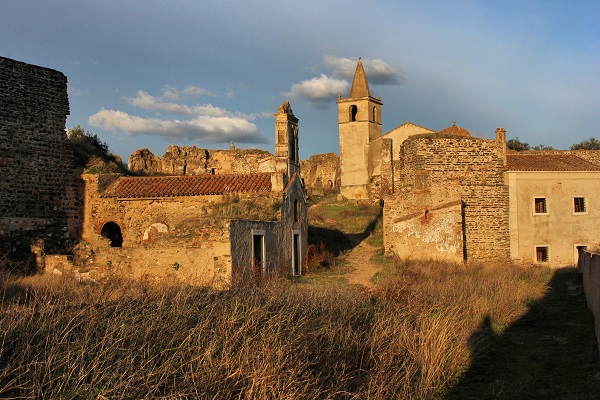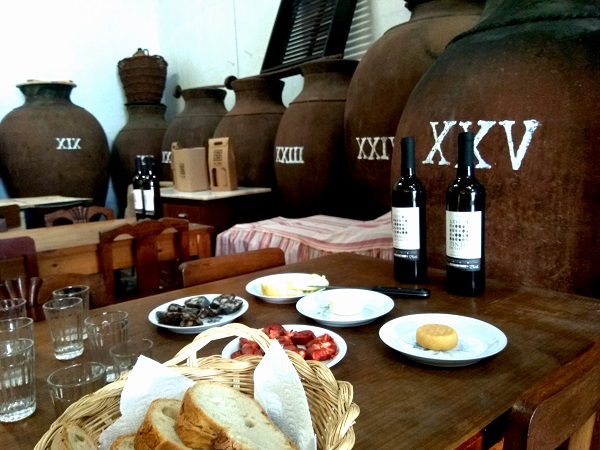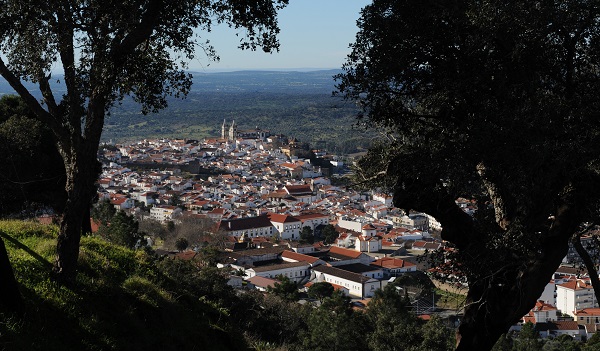Yes, the guidebooks are there to help you explore the Alentejo. But, a lot gets left out. So, if you are planning an escape to Portugal’s Alentejo - these are a few of our favorite hidden treasures that often get left out of the guidebooks — but where history runs deep.
Walled Ghost Town

Juromenha is a fortified town that stands over the Guadiana River, which flows at its feet. Today, Juromenha is a captivating ghost town just east of the town Alandroal, right on the border with Spain. Its origins are ancient, but today just a few dozen inhabitants live in the embrace of a ruined fortress, churches and houses. Juromenha was conquered from the Moors (who called it Julumaniya) in 1167. It was then refortified by the Templars, and its walls saw conflict in the War of Restoration (17th century) and the Napoleonic Wars (19th century). In 1806 the lands on the other side of the river were seized by Spain, and the local population dwindled. It lost its status as a town in 1836. And, by the 1920s, it was mostly abandoned. Open to the wind today, there are plans to restore the castle, rebuild a bridge to Spain on the other side of the river. And for hiking, exploring and adventure, it is a cool destination.
Redondo, a pottery and a wine town
The Alentejo has some great crafts and pottery destinations, but the old castled town of Redondo is well worth the trip. Redondo is the pottery town you may never have heard of. Its bright and decorative pottery is unique with bright floral themes and country life scenes. The clay in the region is resistant to heat, so the pottery is rugged. Redondo is also well known for its wine, being a D. O. C. region. So with wine and pottery, Redondo is well worth a visit, not to mention its historic castle, and medieval center.
The most macabre town coat of arms in Portugal
Moura is a monumental town set on the border lands with Spain - known for its olives and sparkling water. But take a look at the town’s coat of arms, and questions will come to mind. As in, why is there a dead princess on it? During the time of Arab rule, the town was well fortified — and well defended as the capital of the Al-Manijah district. The knights of a young Portugal needed to capture the town, and the only way was through sneaky means. It was 1166, and a Moorish princess named Salúquia, daughter of the city governor, was set to wed a neighboring prince. On the eve of their marriage, the prince’s party was captured and killed by Christian knights, who then disguised themselves as the prince and set off to Moura. Salúquia was waiting for her love to arrive from the top of the castle keep. The disguised knights were allowed to enter the town gates. But as soon as they entered, they turned on the local defenders and took the town by surprise. Salúquia, seeing this in horror, soon realized that her love was dead. In despair, she threw herself from the tower to her death. Moved by the tragedy, the Portuguese troops renamed the town Terra da Moura Salúquia, or simply Moura. And the symbol of the town became the Salúquia Tower, celebrating the legend of the Moorish princess. The tower still stands….
Nisa: The Nice of Portugal?
Legend has it that in the early years of Portugal, whose first king was of southern French lineage, that a group of settlers from Nice, France, came to the Alentejo to settle a town on the border with the Arabs to the South - and they named it after their old homeland. And over 800 years later it became Nisa. Certainly the fine sheep’s milk cheese, bright streets and name hint that there may be some truth there. The old town has a unique feel about it. Built around the ruins of a 13th-century castle and wall with imposing gates still stand at the Porta de Montalvão and Porta da Villa. A Renaissance fountain and baroque church are worth exploring in the old quarter, too. But then there are cheeses to taste with a light-yellow hue, semi-soft and delicious-made from raw sheep’s milk and has a slight herbal-taste.
Roman wine

People who know wines know the Alentejo, but people who know Alentejo wines have a special place in their hearts for the wines of the Vidigueira, Cuba and Alvito region. The local wine cooperative was founded in 1960, but wine making dates back to the time of the Romans. Warm dry summers give real quality to the wine produced in the region. The local Adega Cooperativa de Vidigueira, Cuba e Alvito has a Casa das Talhas that overview customs and techniques of the unique Talha Wine, where the wine is fermented in clay amphora pots that can hold up to 1000 liters of vinho de talha made exactly the way Romans did it 3,000 years ago….
Bring Home a Manta
The origin of Alentejo Manta blankets dates back to the 13th century in the Alentejo, where warm days led to cool nights. These thick woolen blankets are a centuries-old tradition in Alentejo. Initially used as protection from the cold by the shepherds in the fields, as time went by they became an essential piece of bed linen in the region. They come in different versions: for work, simple or striped; for decorative purposes, more embellished, a symbol of status. Today, with their bright patterns they are used as bedspreads and as rugs and even as tablecloths. You can find them at most local shops.
City of Poetry

Portalegre is a charming city, with an old quarter, soaring cathedral and ancient walls. Writer José Maria dos Reis Pereira (1901-1969), better known by his pen name José Regio, spent most of his life in Portalegre. As a writer, José Régio is considered one of the great creators of modern Portuguese literature. He reflected in all of his work, problems related to the conflict between humanity and God, the artist and society, the self and others. He built his powerful poetic and fictional art in a mystical tone with which he analyzed human relationships and individual loneliness. His home, while he was a teacher, is a museum with the interior untouched on the wishes of the poet. His famous Toada de Portalegre is dedicated to the city in which he spent 30 years of his life, and it starts like this…
In Portalegre, city
In the Alto Alentejo, surrounded
By Mountains, winds, cliffs, olive trees and cork oaks
I lived in an old house, that was if it was
Made for me to live in …
Alcáçovas: Where the world was divided
Forget the treaty of Tordesillas - it was at Alcáçovas that the brilliance of future King D. Joao II was seen. In the War of Castilian Succession, Portugal’s king D.Afonso V had become entangled, and was defeated at the Battle of Toro in 1476, but his son led relief forces and snatched a victory out of the jaws of defeat. The treaty signed at Alcáçovas in 1479 gave Portugal a green light to continue its maritime exploration, and set sail on a route to both India and Brazil, with little oppression from Spain. It divided the Atlantic into two sections of influence, Castile's rights over the Canary Islands were renewed while Portugal got the exclusive right of navigating, conquering and trading in the Atlantic south of the Canaries. Portugal won a hegemony in the Atlantic for what it held, and for lands discovered in the future. The foundation of modern colonialism was laid.
The Paço dos Henriques is where the Alcáçovas Treaty was signed. Also known as Paço Real da Vila or Paço das Alcáçovas, is a monument built at the end of the 13th century on the site of the castle by order of King D. Dinis, to serve as a royal residence. The Paço presents a mix of styles, being mainly based on Gothic architecture, with typical features of the regional Manueline. It also has Renaissance elements, and some Mudejar Art influences, namely in the façade.



